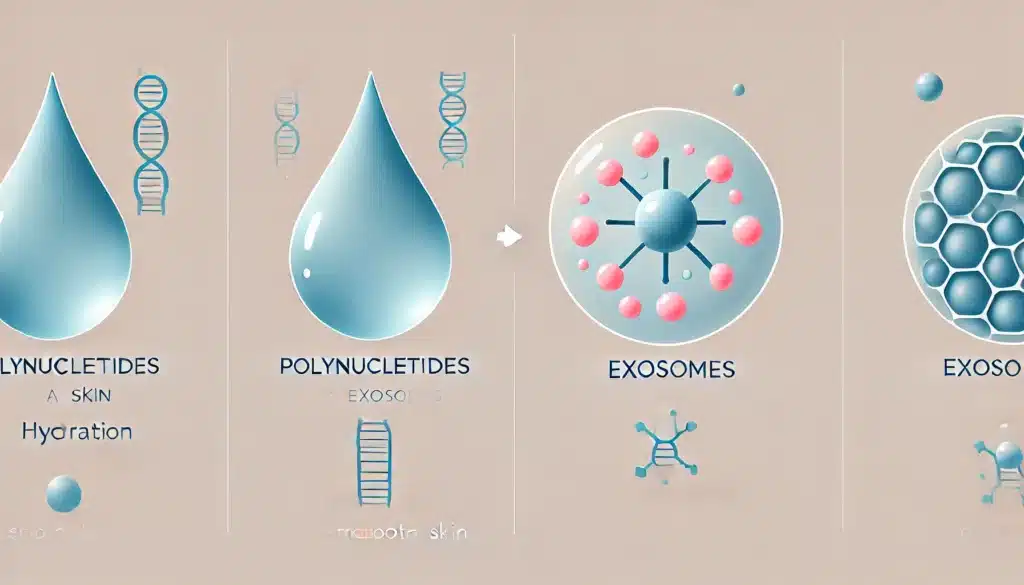
Polynucleotides and exosomes are both emerging technologies in the field of aesthetics, but they have different origins, mechanisms of action, and applications.
Polynucleotides
Origin: Polynucleotides are polymers composed of long chains of nucleotides, which are the basic building blocks of DNA and RNA. They can be derived from natural sources like salmon sperm DNA or synthesized artificially.
Mechanism of Action:
- Hydration: Polynucleotides have a high capacity for water retention, which helps in moisturizing and hydrating the skin.
- Regeneration: They promote tissue regeneration and healing by providing a scaffold for cellular growth and by stimulating fibroblast activity.
- Anti-inflammatory: Polynucleotides have anti-inflammatory properties, which can reduce redness and swelling in treated areas.
Applications:
- Skin rejuvenation: Enhancing skin texture, elasticity, and hydration.
- Wound healing: Accelerating the healing process in damaged tissues.
- Reducing the appearance of scars and fine lines.
Exosomes
Origin: Exosomes are small extracellular vesicles (30-150 nm in diameter) secreted by various types of cells, including stem cells. They contain a rich cargo of proteins, lipids, and nucleic acids (including mRNA and miRNA).
Mechanism of Action:
- Cell Communication: Exosomes facilitate intercellular communication by transferring their cargo to recipient cells, which can modulate cellular behavior.
- Regeneration and Repair: The bioactive molecules in exosomes can stimulate cell proliferation, differentiation, and migration, promoting tissue repair and regeneration.
- Anti-aging: They can enhance the production of collagen and elastin, improving skin firmness and reducing the signs of aging.
Applications:
- Skin rejuvenation: Enhancing overall skin quality and reducing the signs of aging.
- Hair restoration: Stimulating hair growth and improving scalp health.
- Anti-inflammatory: Reducing inflammation and promoting healing in various skin conditions.
Key Differences
- Source:
- Polynucleotides: Derived from DNA/RNA chains.
- Exosomes: Derived from cell secretions, particularly stem cells.
- Mechanism:
- Polynucleotides: Primarily hydrate, provide structural support, and promote tissue regeneration.
- Exosomes: Facilitate cell communication and deliver bioactive molecules that modulate cellular functions.
- Application:
- Polynucleotides: Mainly used for hydration, anti-aging, and wound healing.
- Exosomes: Used for a broader range of regenerative purposes, including skin rejuvenation, hair restoration, and anti-inflammatory treatments.
Both technologies offer promising benefits in aesthetic treatments, but their distinct mechanisms and applications can be tailored to specific needs and conditions in patients.
